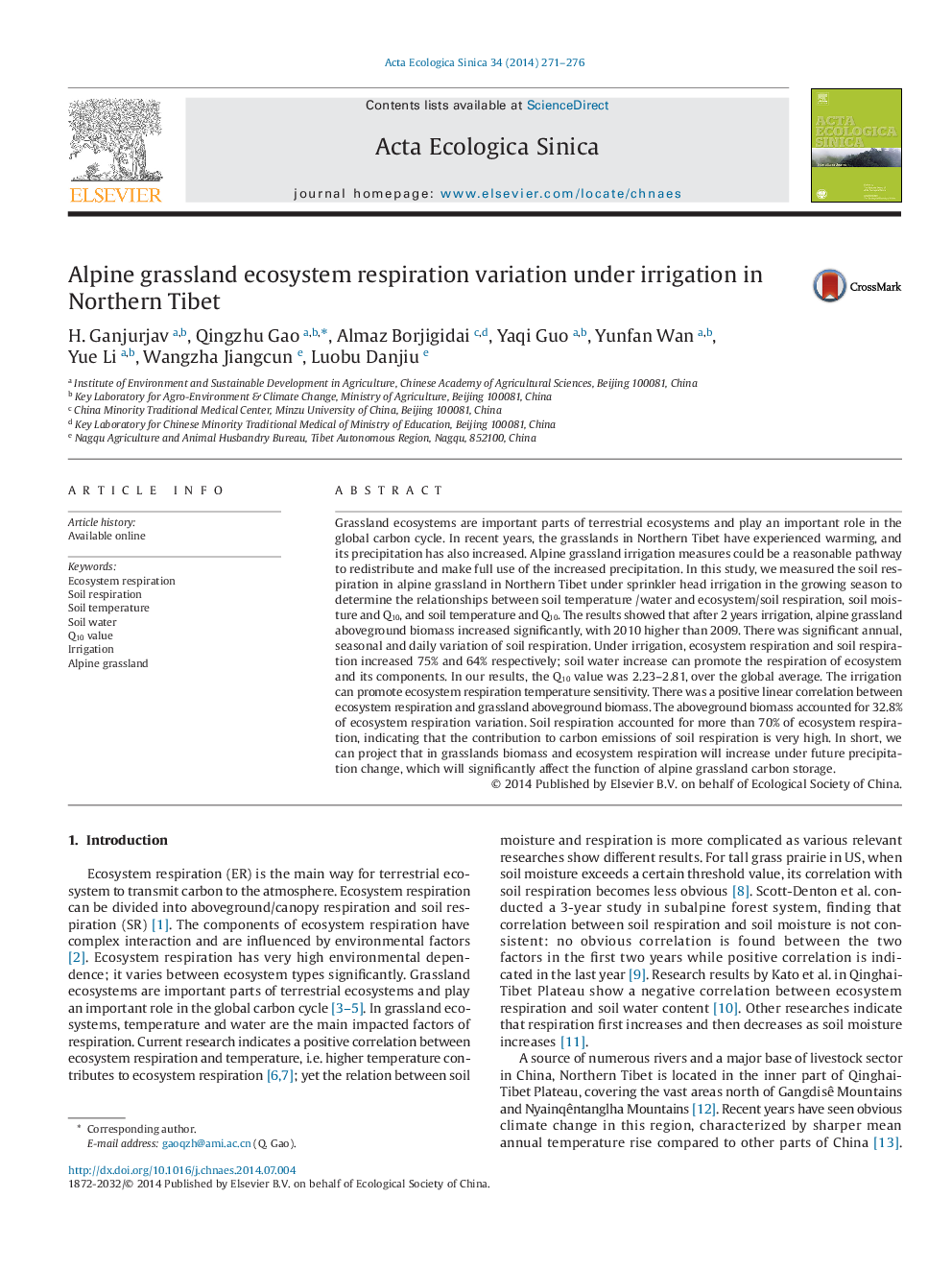| Article ID | Journal | Published Year | Pages | File Type |
|---|---|---|---|---|
| 4379931 | Acta Ecologica Sinica | 2014 | 6 Pages |
Grassland ecosystems are important parts of terrestrial ecosystems and play an important role in the global carbon cycle. In recent years, the grasslands in Northern Tibet have experienced warming, and its precipitation has also increased. Alpine grassland irrigation measures could be a reasonable pathway to redistribute and make full use of the increased precipitation. In this study, we measured the soil respiration in alpine grassland in Northern Tibet under sprinkler head irrigation in the growing season to determine the relationships between soil temperature /water and ecosystem/soil respiration, soil moisture and Q10, and soil temperature and Q10. The results showed that after 2 years irrigation, alpine grassland aboveground biomass increased significantly, with 2010 higher than 2009. There was significant annual, seasonal and daily variation of soil respiration. Under irrigation, ecosystem respiration and soil respiration increased 75% and 64% respectively; soil water increase can promote the respiration of ecosystem and its components. In our results, the Q10 value was 2.23–2.81, over the global average. The irrigation can promote ecosystem respiration temperature sensitivity. There was a positive linear correlation between ecosystem respiration and grassland aboveground biomass. The aboveground biomass accounted for 32.8% of ecosystem respiration variation. Soil respiration accounted for more than 70% of ecosystem respiration, indicating that the contribution to carbon emissions of soil respiration is very high. In short, we can project that in grasslands biomass and ecosystem respiration will increase under future precipitation change, which will significantly affect the function of alpine grassland carbon storage.
